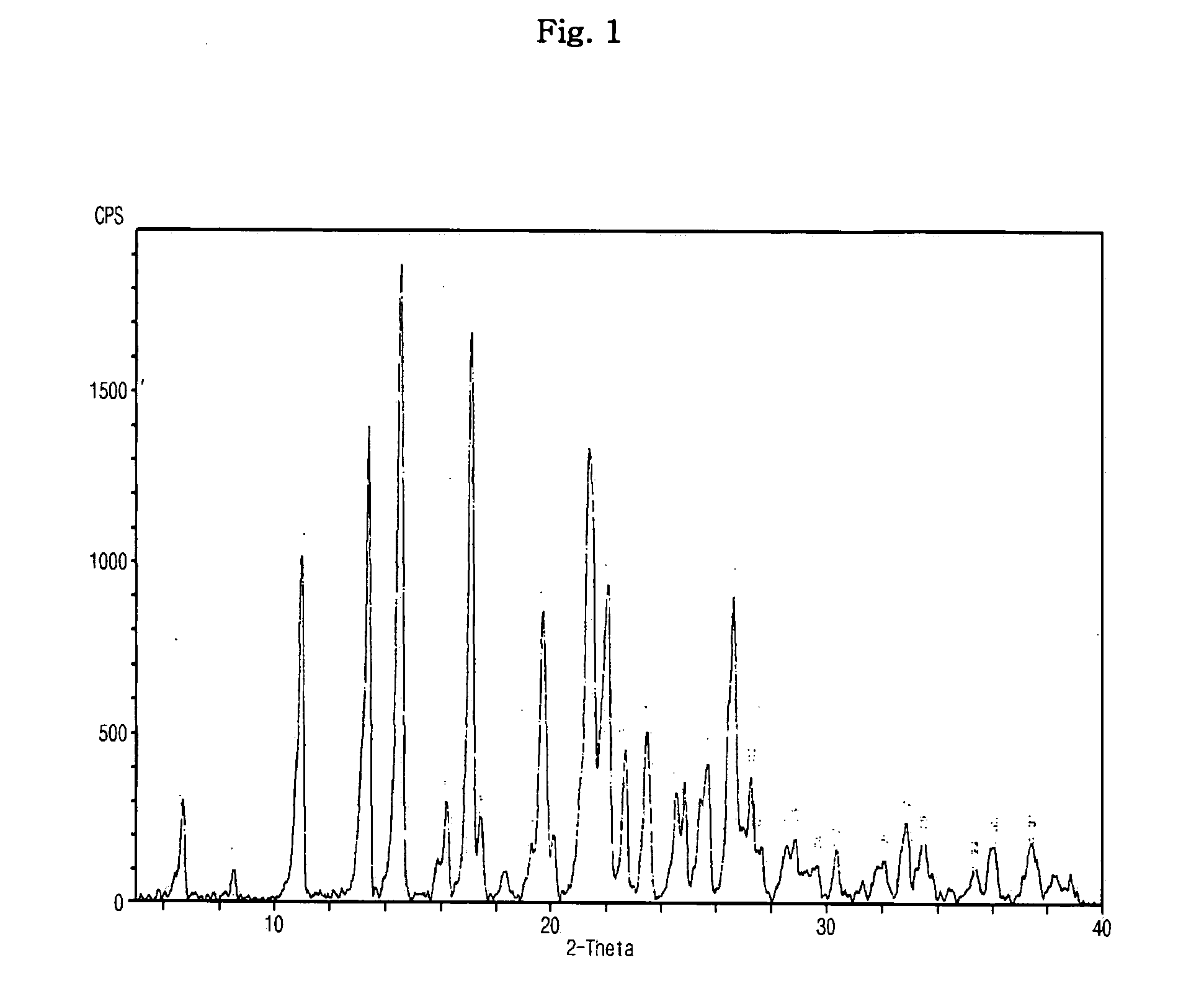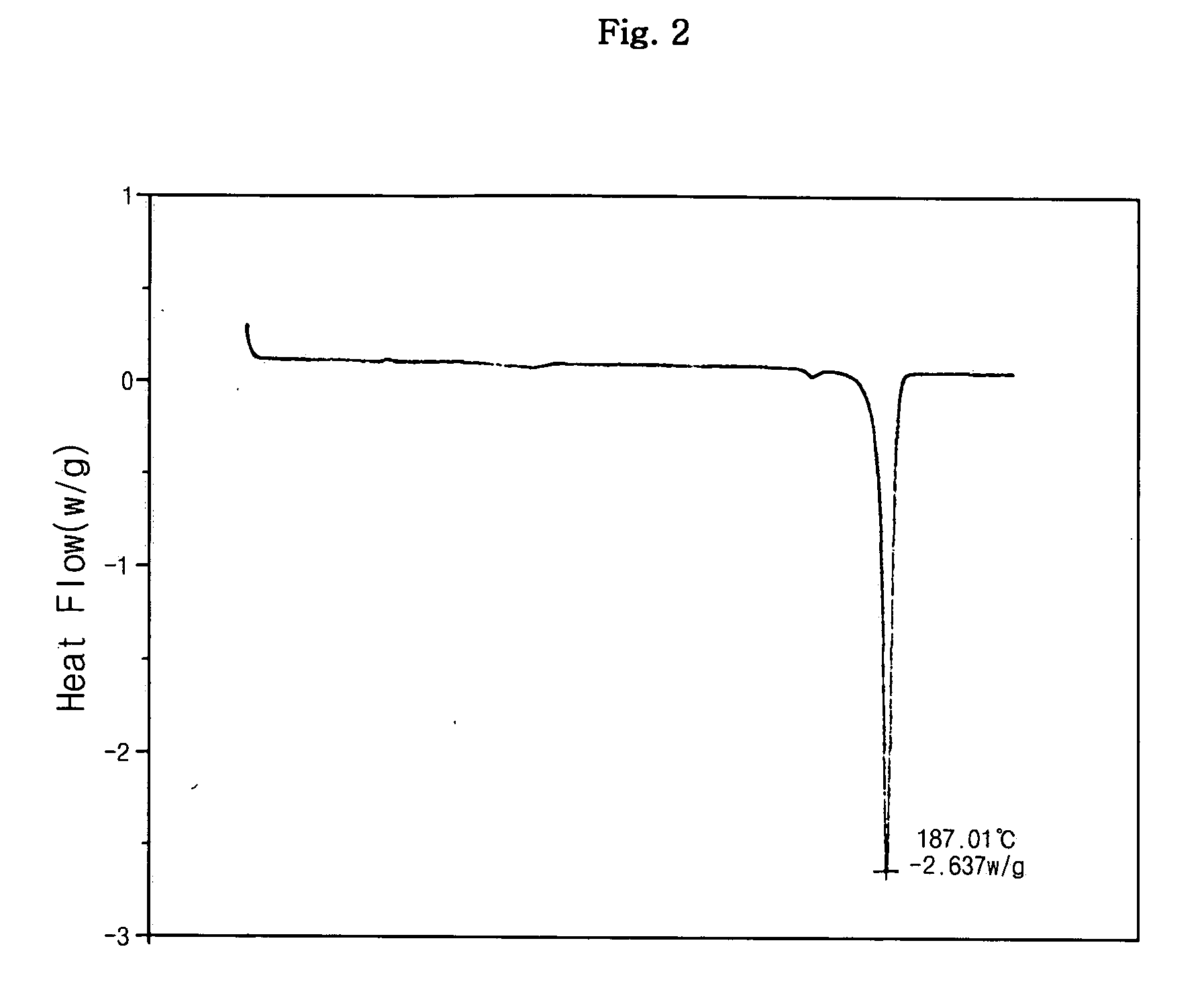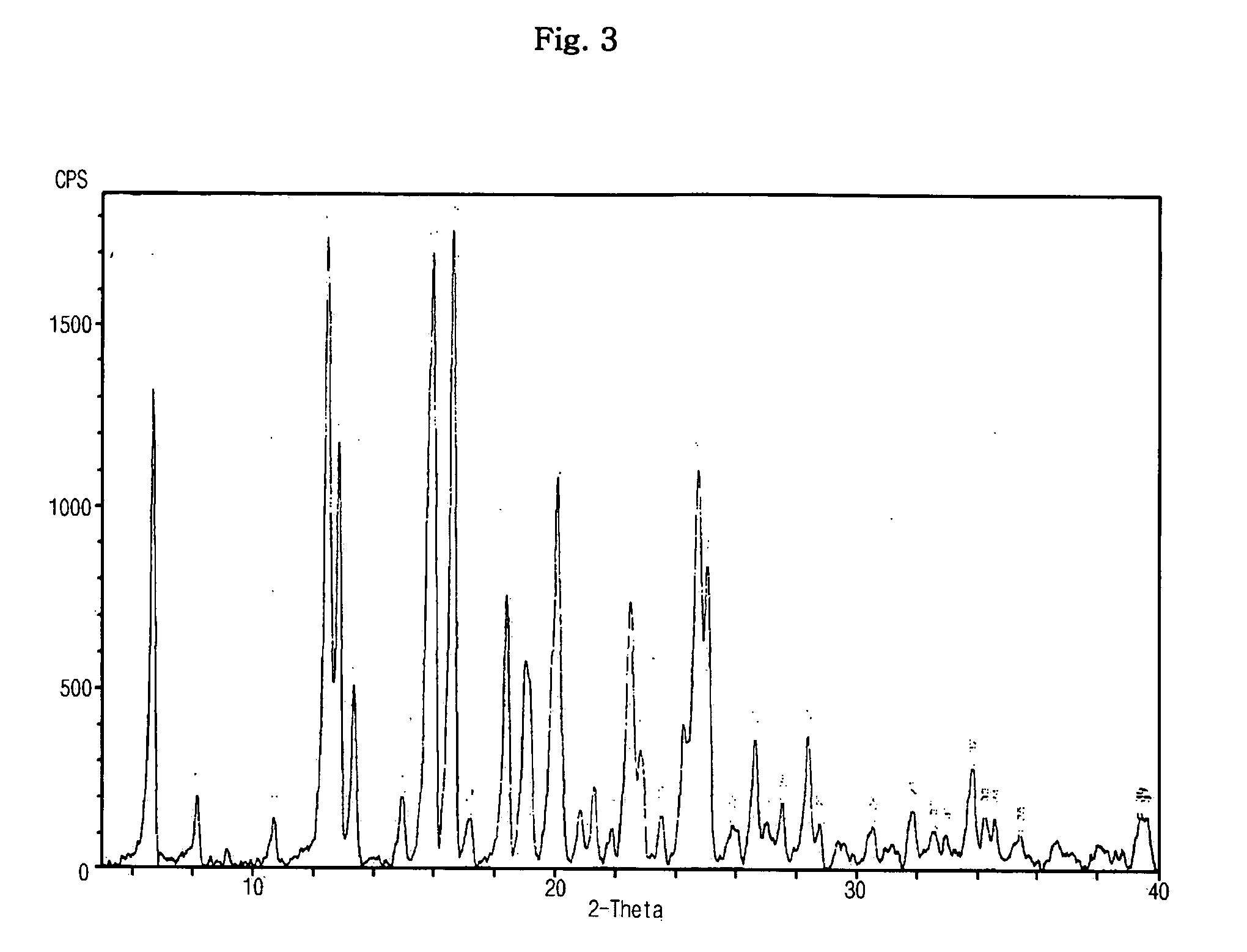Sulphonic acid salt of sibutramine
- Summary
- Abstract
- Description
- Claims
- Application Information
AI Technical Summary
Benefits of technology
Problems solved by technology
Method used
Image
Examples
reference example 1
Preparation of Sibutramine Hydrochloride Monohydrate
[0052] Sibutramine hydrochloride anhydrate was prepared according to a method described in Korean Pat. Publication No. 90-00274. Then, according to a method described in Korean Pat. Publication No. 94-08913, 10 g of the prepared sibutramine hydrochloride anhydrate was dissolved in a boiling mixture of 110 ml acetone and 1.2 ml water, and the resulting solution was hot-filtered and distilled to remove 80 ml of the solvent, thus reducing the volume of the filtrate. The concentrate was filtered to recover a generated solid. The solid was vacuum-dried, thus obtaining 9.2 g (yield: 87%) of the compound of Chemical Formula 2, which had a melting point of 195° C.
example 1
Preparation of Sibutramine Besylate
[0053] Sibutramine (22.4 g, 0.08 mol) was dissolved in 224 ml of ethyl acetate with agitation. After the solution was adjusted to 25° C., benzenesulfonic acid (12.64 g, 0.08 mol) in 124 ml ethyl acetate was slowly added in droplets to the solution. The resulting mixture was agitated at 25° C. for 2 hrs to form precipitates and then agitated at 4° C. for 1 hr. The generated solid was recovered by filtration under pressure, washed with 100 ml of ethyl acetate, and vacuum-dried at 40° C., thus obtaining 33.99 g (yield: 97.0%) of a target compound.
[0054] The obtained sibutramine besylate was subjected to elemental analysis and melting point analysis, and the results are as follows.
TABLE 1Elemental analysis(C23H32ClNO3S)Unit (%)Measured valueC: 62.98, H: 7.48, N: 3.20, O: 11.24, S: 7.34Theoretical valueC: 63.07, H: 7.36, N: 3.20, O: 10.96, S: 7.32
[0055] Melting point: 187° C.
[0056] NMR (δ, DMSO-d6): 8.42 (1H, s), 7.63˜7.32 (9H, m), 3.76 (1H, t), 2....
example 2
Preparation of Sibutramine Camsylate
[0057] Sibutramine (30.0 g, 0.107 mol) was dissolved in 300 ml of ethyl acetate with agitation. After the solution was adjusted to 25° C., (1S)-(+)-camphor-10-sulfonic acid (24.9 g, 0.107 mol) in 250 ml ethyl acetate was slowly added in droplets to the solution. The resulting mixture was agitated at 25° C. for 2 hrs to form precipitates and then agitated at 4° C. for 1 hr. The generated solid was recovered by filtration under pressure, washed with 100 ml of ethyl acetate, and vacuum-dried at 40° C., thus obtaining 52.31 g (yield: 95.4%) of a target compound.
[0058] The obtained sibutramine camsylate was subjected to elemental analysis and melting point analysis, and the results are as follows.
TABLE 2Elemental analysis(C27H42ClNO4S)Unit (%)Measured valueC: 63.51, H: 8.42, N: 2.80, O: 12.71, S: 6.44Theoretical valueC: 63.32, H: 8.27, N: 2.73, O: 12.50, S: 6.26
[0059] Melting point: 190° C.
[0060] NMR (δ, DMSO-d6): 8.49 (1H, s), 7.56˜7.49 (4H, m), ...
PUM
| Property | Measurement | Unit |
|---|---|---|
| Mass | aaaaa | aaaaa |
| Mass | aaaaa | aaaaa |
| Mass | aaaaa | aaaaa |
Abstract
Description
Claims
Application Information
 Login to View More
Login to View More - R&D
- Intellectual Property
- Life Sciences
- Materials
- Tech Scout
- Unparalleled Data Quality
- Higher Quality Content
- 60% Fewer Hallucinations
Browse by: Latest US Patents, China's latest patents, Technical Efficacy Thesaurus, Application Domain, Technology Topic, Popular Technical Reports.
© 2025 PatSnap. All rights reserved.Legal|Privacy policy|Modern Slavery Act Transparency Statement|Sitemap|About US| Contact US: help@patsnap.com



